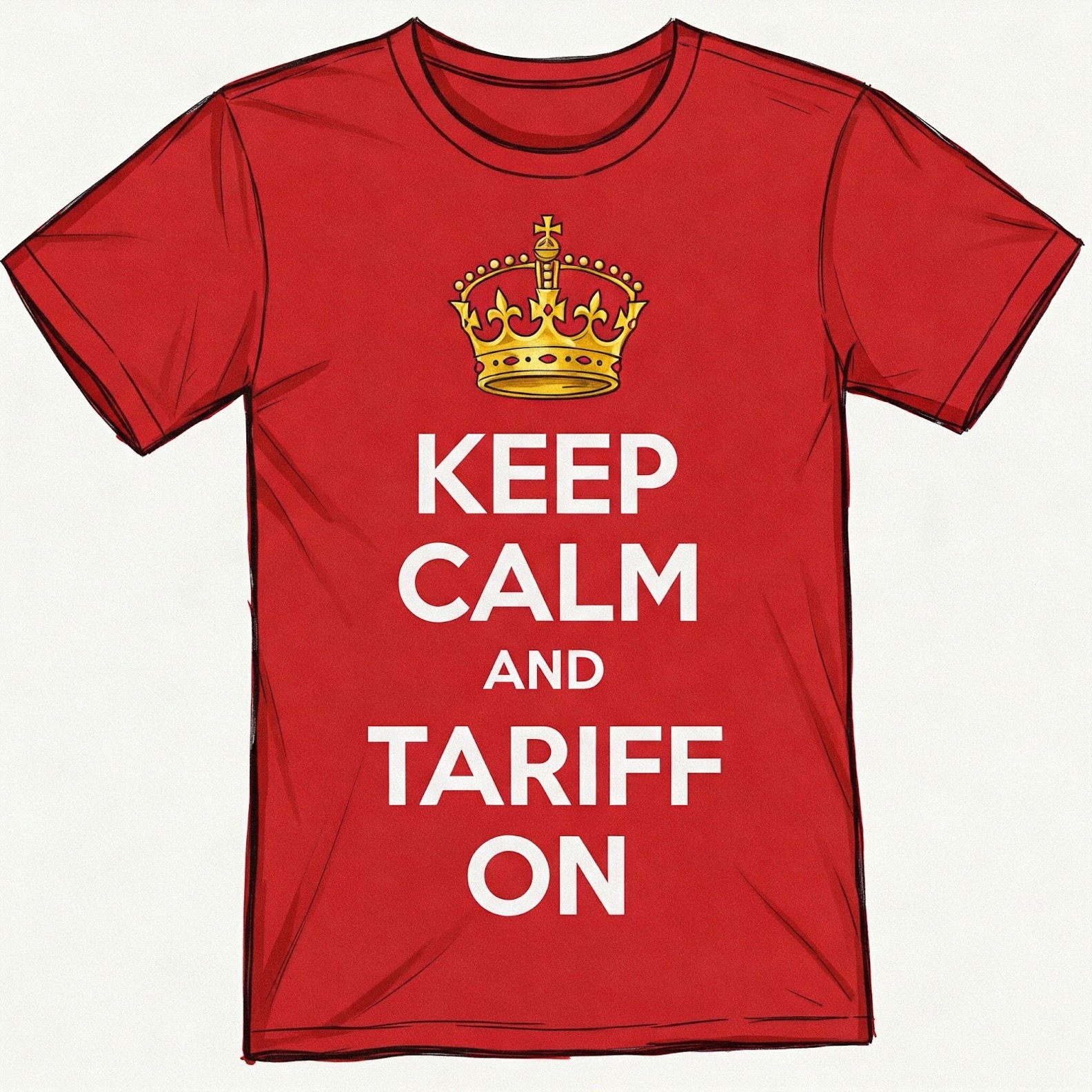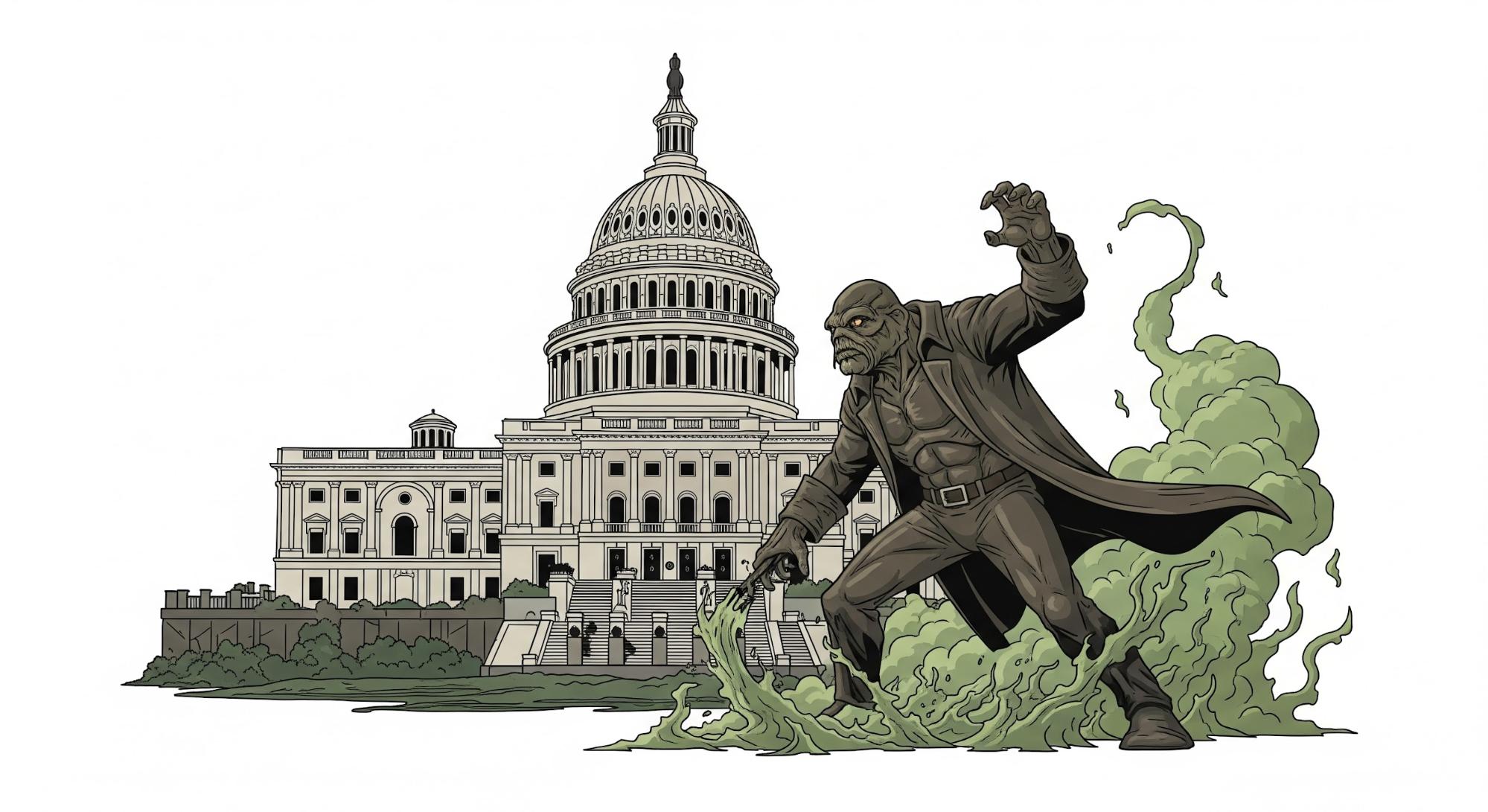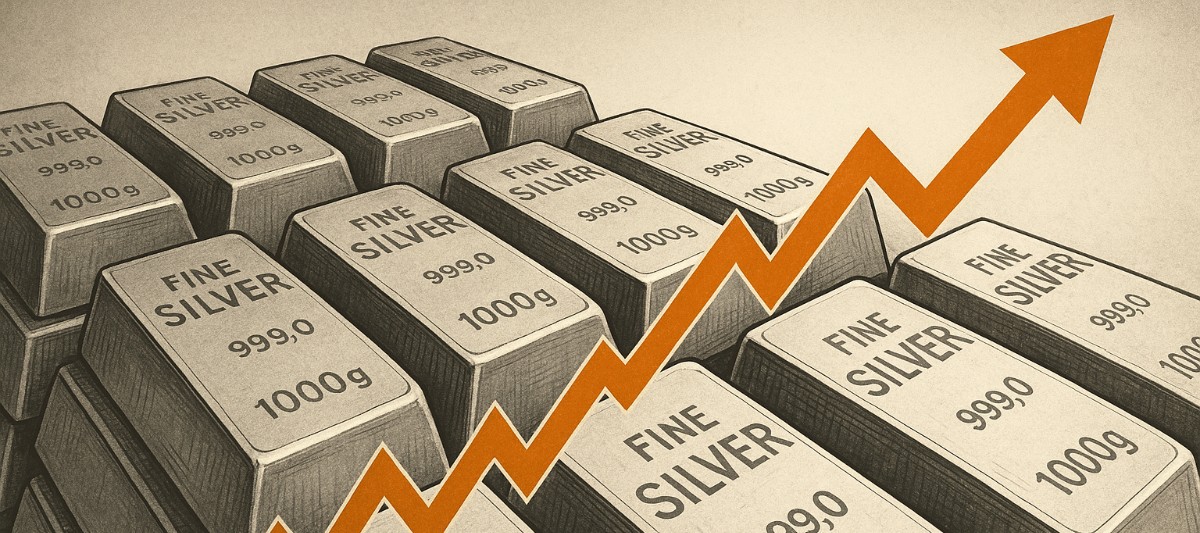
Posted April 03, 2025
By Sean Ring
Keep Calm and Tariff On!
President Donald Trump’s announcement of sweeping import tariffs—what he dubbed “Liberation Day”—has caused the expected ruckus in global financial markets. And rightly so. This isn’t some light policy tweak. It’s a full-blown trade regime reset.
As of April 5, a universal 10% baseline tariff on all imports into the United States will go into effect. Days later, a raft of reciprocal tariffs—as high as 49% on Cambodia and 54% on China—will begin rolling out country by country.
Predictably, overseas investors didn’t take the news well. As of 7 a.m. ET, S&P 500 futures are down 3.33%, Nasdaq futures are down 3.86%, and the Russell 2000 ETF (IWM) is down 4.63% in the premarket. Headlines around the world screamed “global trade chaos.”
But behind the noise, something remarkable happened in the bond market: the 10-year U.S. Treasury yield dropped, signaling a flight to safety and expectations of looser monetary policy ahead. And if you’re like U.S. Treasury Secretary Scott Bessent, former Soros CIO and a prominent Trump economic backer, that’s precisely the point.
Let’s get to what’s happening beneath the headlines. The mainstream financial press is chasing the obvious—but wrong—narrative.
The Trade Imbalance That Was Always There
The Trump administration's rationale for the new tariffs is “economic self-defense.” It argues that the U.S. has been a free lunch provider for global exporters while receiving little in return.
And, frankly, they’re not wrong.
Here's a rough snapshot of the tariffs other countries charged on U.S. goods before the announcement:
- China: 15–20% average, with some goods much higher.
- European Union: 3–5%, but 10% on autos, up to 30% on some agricultural goods.
- India: 17% average, up to 100% on vehicles.
- Vietnam, Thailand, Bangladesh, Cambodia: 10–25%, often higher on finished goods.
- Japan and South Korea: Lower nominally, but with heavy non-tariff barriers.
- Taiwan: ~6%, but often high in key categories like steel.
In contrast, the U.S. charged low single-digit tariffs on most imports, and zero in some sectors.
These countries and trade blocs screaming “Retaliation!” have some gall, right?
Trump’s move—especially the “reciprocal” element—aggressively attempts to rebalance this situation. Instead of endless trade negotiations, he’s opting for brute force: slap a tariff on everything, then tailor higher rates to specific offenders.
To paraphrase Rick Blaine from Casablanca: It’s not subtle but might be effective.
Why Scott Bessent Loves It
The immediate consequence of these tariffs, outside of hurt feelings in Brussels and Beijing, is economic friction. Tariffs act like a tax. They raise prices, slow global trade, and typically spark inflation.
Yet Scott Bessent, Trump’s economic whisperer and one of the savviest macro investors around, is thrilled.
Why? Because higher tariffs = slower growth = lower interest rates.
As equities sold off, yields on the 10-year Treasury yield dropped from yesterday’s high of 4.236% to 4.066%, an over 4% drop. In fixed income, that’s a big single-day move,
That’s the endgame for Bessent, as lower rates grease the wheels for the real economy.
From the March 20th Rude:
Targeting the 10-year yield shows a preference for fixing the "real economy"—where people live, work, and borrow—over boosting asset prices that only benefit wealthier individuals with stock holdings.
It’s not all for the people, though. The U.S. government’s borrowing costs are the Treasury yields. So, lowering the 10-year yield will reduce the interest burden on the national debt, freeing up the budget for other things like infrastructure building or tax cuts.
Bessent wants to lower yields without relying on Fed cuts, which would stoke inflation. By focusing on the 10-year yield, he will directly control long-term rates, offering a more precise tool than broad monetary policy shifts that might juice the stock market and increase consumer prices.
Remember, former Treasury Secretary Janet Yellen left Bessent $7 trillion in U.S. Treasury debt that needs to be refinanced this year. He simply can’t issue long-term debt (which Yellen should’ve done when long-term rates were near zero instead of issuing short-term paper) at elevated interest rates. Yields must fall for him to do it.
The Market Sell-Off: Just Noise?
The overnight equity futures markets’ reaction was predictable… but may be overcooked.
Yes, tariffs increase uncertainty. They’ll hurt profit margins for multinationals that rely on cheap imports. And yes, sectors like semiconductors, autos, and retail will feel the pain.
But this isn’t 2008. Or even 2020. There’s no credit crisis, no pandemic, no systemic blow-up.
Instead, this is more like a global reset of supply chains and pricing power.
In the short term, input costs rise. But longer-term, domestic producers gain pricing leverage. U.S.-based manufacturers could see margins improve, especially in commodities and intermediate goods.
And recent history is on Trump’s side. The 2018–2019 trade war with China initially caused volatility, but U.S. markets ultimately pushed higher. The Nasdaq doubled between 2019 and 2021. Investors adapted.
Will we see similar performance this time? Maybe not. But we shouldn’t expect a protracted bear market from a simple tariff adjustment. The bottom may be in soon.
The Fed is Subordinate
One of the hidden implications of “Liberation Day” is how it corners the Federal Reserve.
With the 10-year yield falling and economic uncertainty rising, the pressure on the Fed to ease has increased substantially. Even though inflation is still sticky, the Fed faces a different risk: a deflationary shock via collapsing trade volumes.
That could prompt a rate cut in Q3, especially if labor market softness emerges.
And Trump knows it. By implementing tariffs now, he’s giving the Fed the excuse and the runway to start easing.
In effect, Trump simultaneously plays the trade, fiscal, and monetary policy boards.
What Comes Next
Make no mistake: this isn’t a one-off policy move. It’s the beginning of restructuring the U.S. economic model, away from global dependency and toward greater self-sufficiency.
That’s going to create winners and losers.
Winners: Domestic manufacturers, commodity producers, select financials (benefiting from lower long-term rates)
Losers: Multinationals with complex global supply chains, consumer-facing importers, foreign exporters reliant on the U.S. market
Volatility will remain high, the VIX will likely stay elevated, and earnings estimates need revising. Still, we may see an equity rally emerge from this.
If anything, it's a reminder that trade policy matters again. And that’s because of fiscal dominance. That’s when a country’s debt load is so substantial that monetary policy must fall in line. In effect, the Fed is no longer independent; it’s at the mercy of the U.S. Treasury. Not in my lifetime, at least until now, has the Treasury mattered more than the Fed.
Wrap Up
Remember, America is 13% of the world’s GDP. If consumption is 70% of U.S. GDP, then U.S. consumers dictate just over 9% of the world’s economy. That explains much of the foreign whining.
President Trump’s tariff schedule feels like a market shock. But he’s trying to reposition global trade in America’s favor, stimulate domestic production, and engineer lower interest rates.
For Scott Bessent, it’s a dream scenario: kill the trade deficit, push yields down, and force the Fed to play ball.
The sell-off? It’s collateral damage.
The real story is beneath the surface—where long-term rates fall, capital returns home, and the Fed prepares its next cut.
The era of easy globalization is over, but opportunity may be just getting started.

8 Things That Will Turbocharge The Gold Price
Posted December 16, 2025
By Jim Rickards

Can Miners Double Again?
Posted December 15, 2025
By Sean Ring

How FDR Put America Behind Golden Bars
Posted December 12, 2025
By Byron King

Swamp Thing
Posted December 11, 2025
By Sean Ring

A Sliver of Silver
Posted December 10, 2025
By Sean Ring

